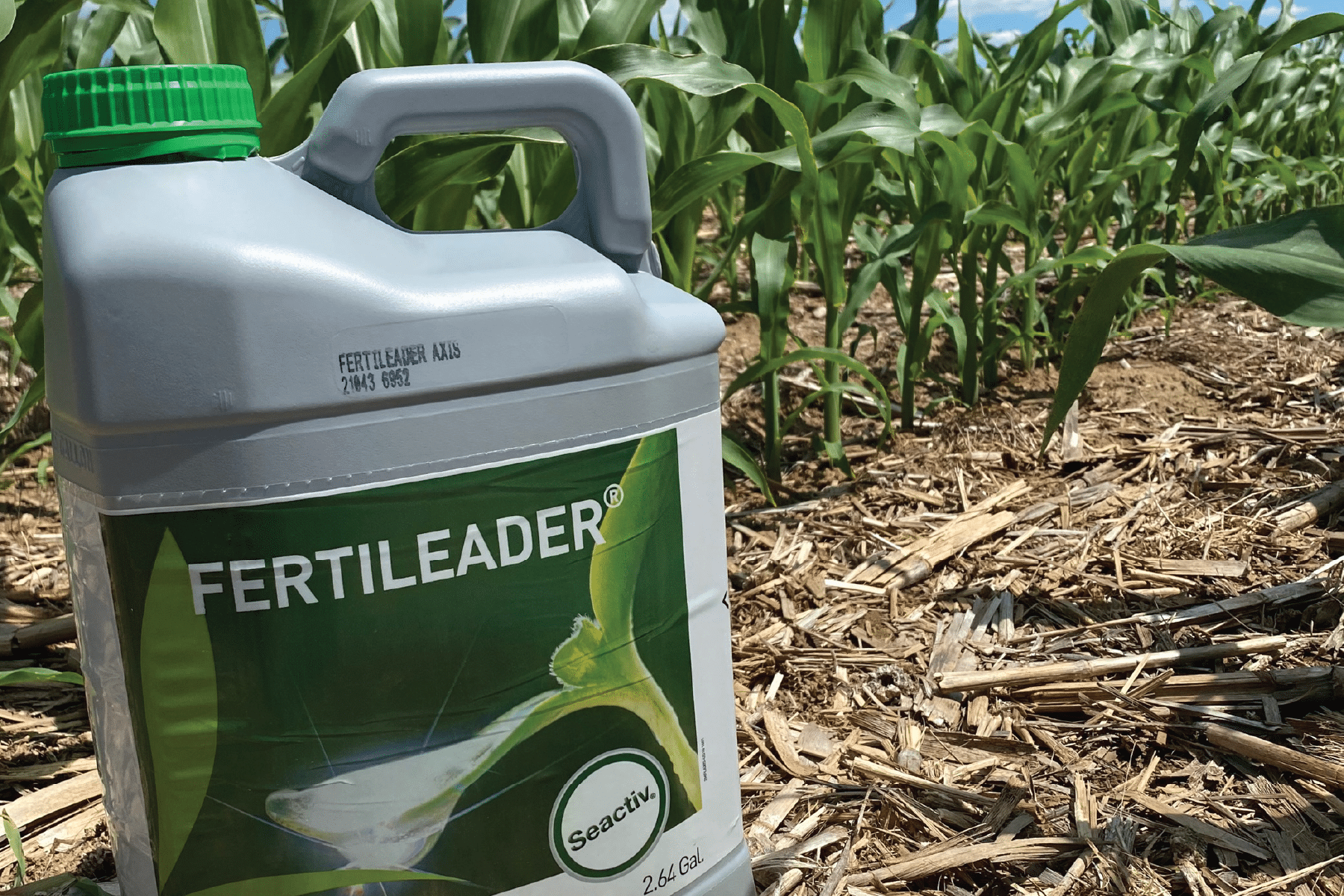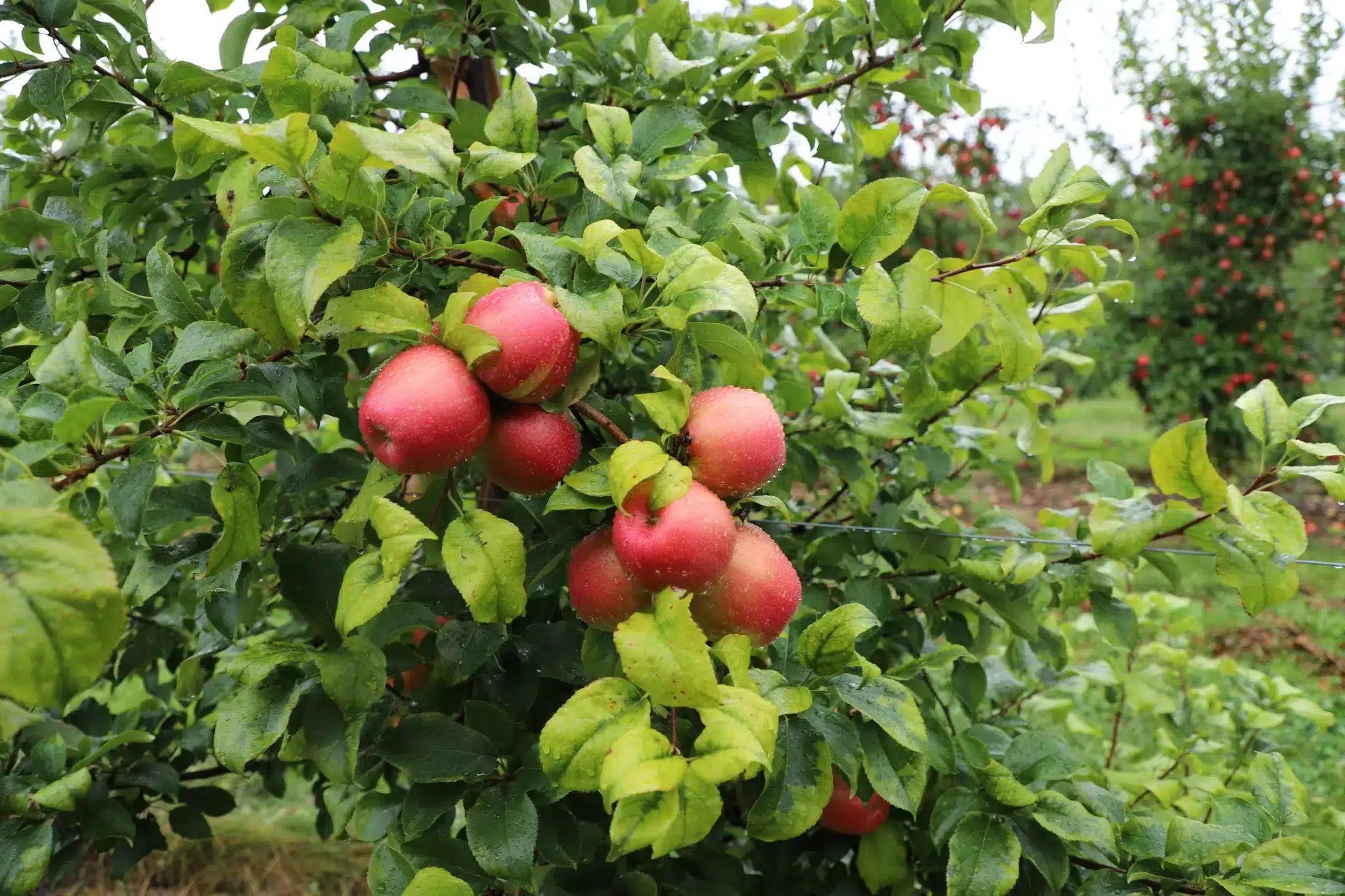Potatoes dominate more acreage in the United States than the leading three vegetable crops combined (USDA NASS, 2017). They are an incredibly important food resource around the world and a staple to the average American diet. Growing potatoes embody a distinct set of standards regarding maintenance, tuber set, and environmental stresses. The crop requires a custom approach on the plant nutrition front in order to achieve market quality standards.
Potato Crop Characteristics
Similar to most crops, potatoes have specific demands in nutrient ratios and planting techniques. They are grown in deep, heavily tilled, lighter texture soils that are prone to nutrient leaching and loss. The plant’s tendency for heavy feeding is attributed to its shallow root system that hinders nutrient reach and uptake. With distinct nutrient requirements at various stages of development, high input costs can create a hurdle on the grower’s quest for a return on investment.
On the other hand, the potato industry has faced immense challenges this year with widespread, unpredictable drought that has severely impacted the overall quality of the potato plant. Therefore, agricultural innovation is a must for the advancement of cropping systems in the wake of difficult times like these. More and more farmers are encountering the astounding benefits of biological additives that can make a significant difference in tuber count, total potato hundredweight, and defect prevention.
TIMAC AGRO’s Approach to Potato Nutrition
TIMAC AGRO USA strives to meet the individual needs of both our farmers and crops. For the past couple of years, potatoes have been one of our primary research crops in top potato-producing states like Wisconsin, Pennsylvania, Michigan, and Florida.
Here you can see a snippet of some results we have seen in the field:
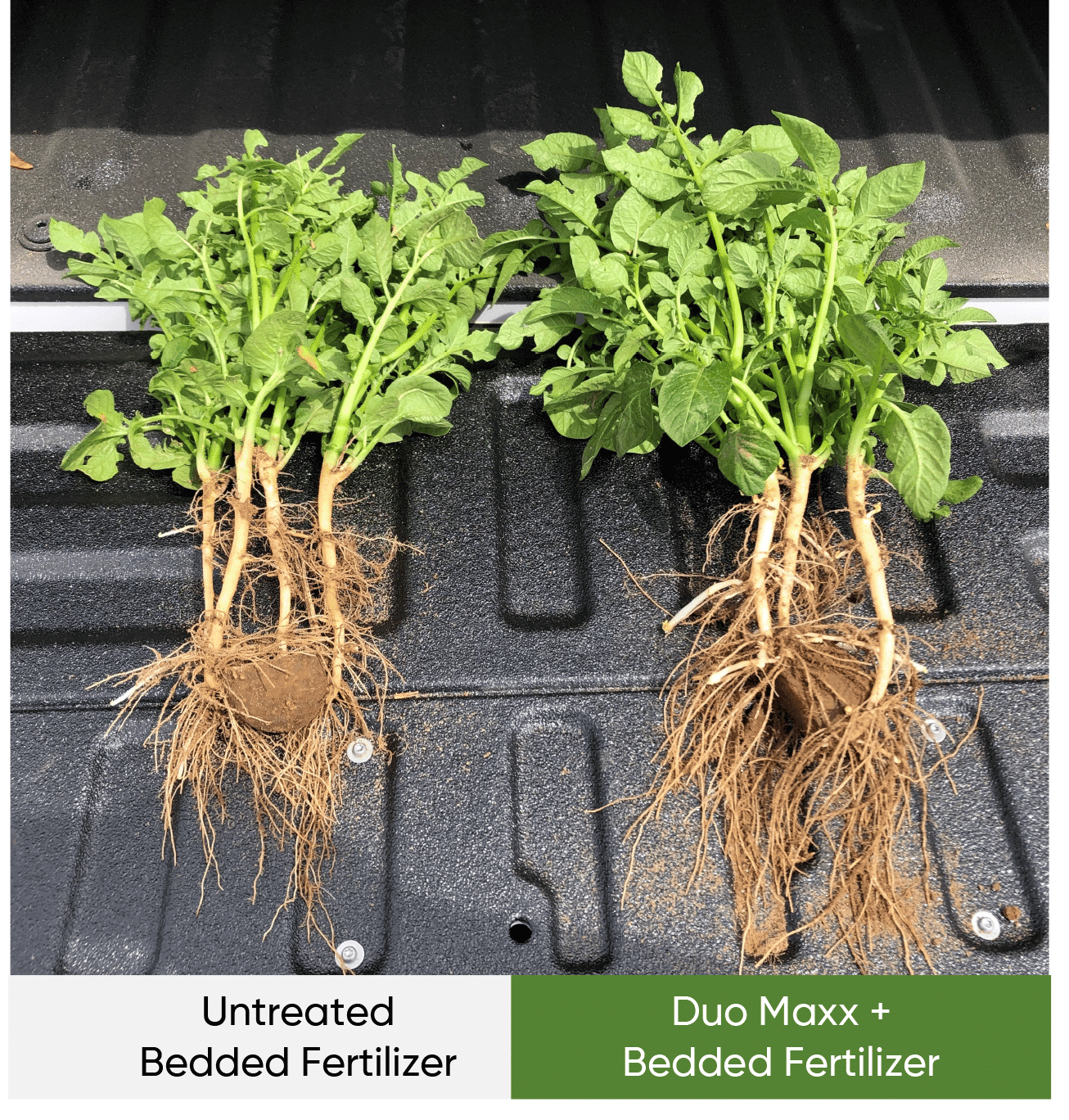
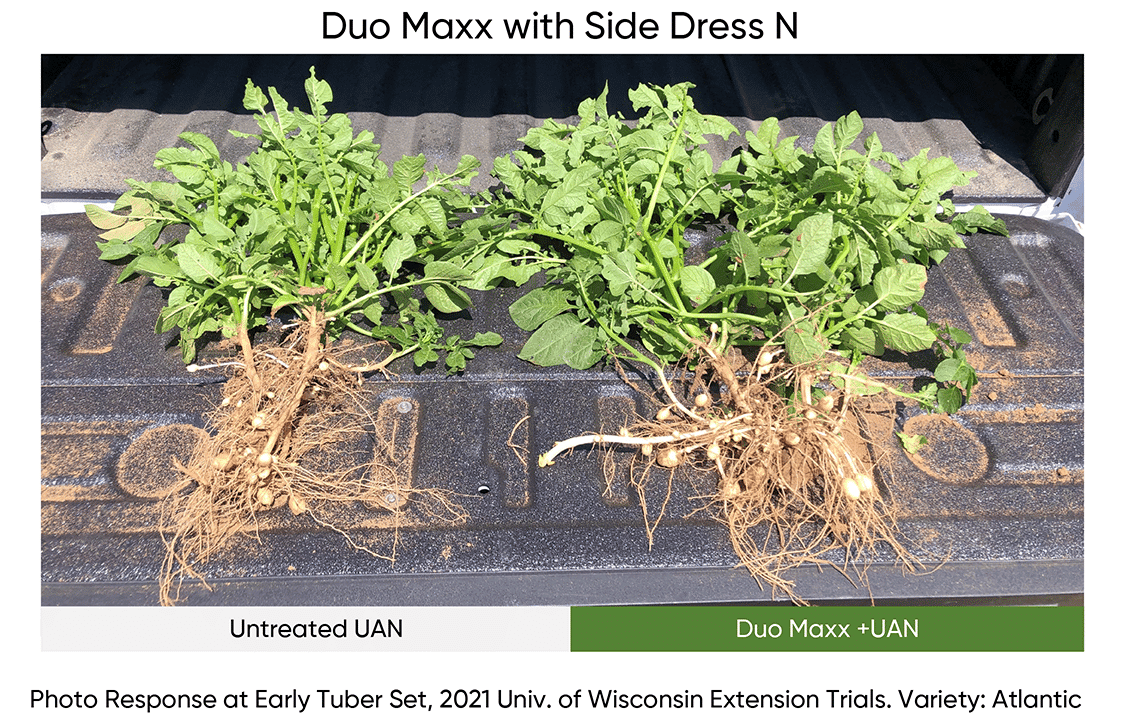
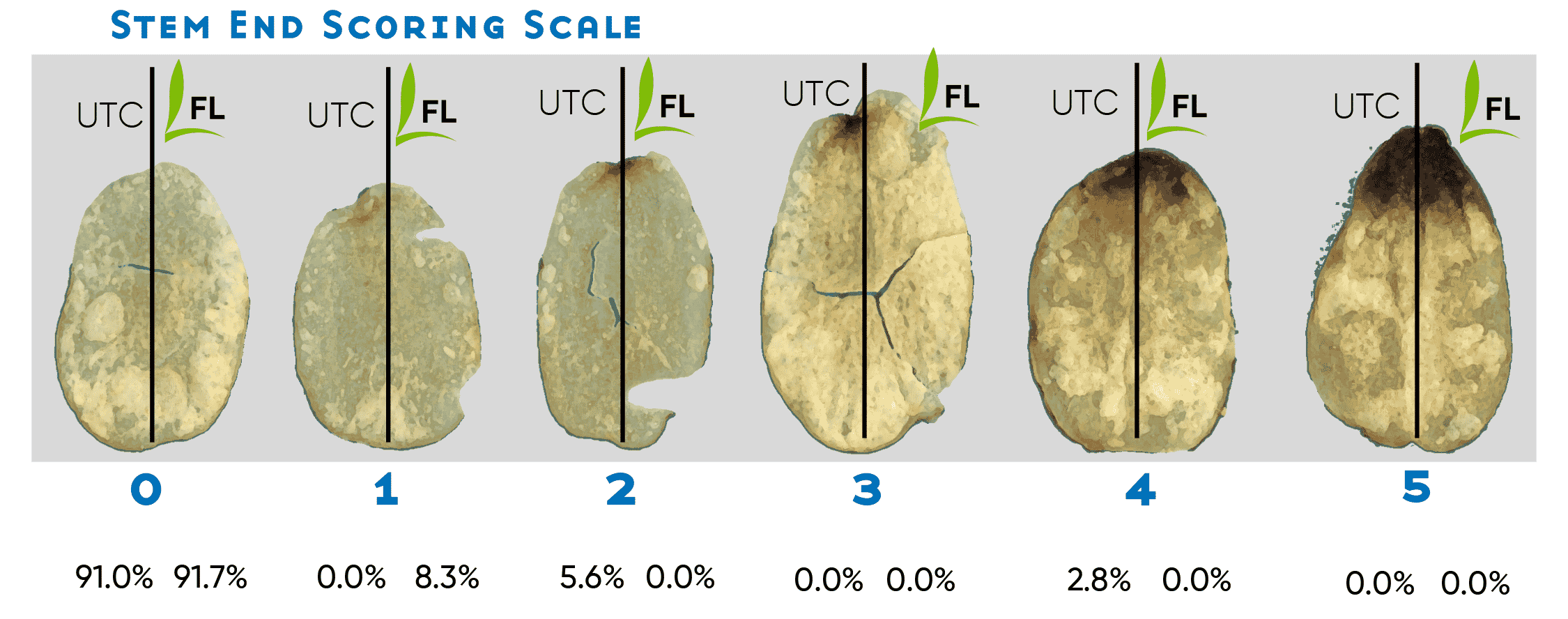
See more results from the field by accessing our Potato Research Book:
TIMAC AGRO Main Solutions for Potato Nutrition
DUO MAXX®
TIMAC AGRO’s DUO MAXX is a fertilizer additive that utilizes multiple technologies to reduce various forms of environmental nutrient loss while also improving nutrient mobility from the soil to the plant. DUO MAXX combines our patented phenolic binding compound, MPPA®, nitrogen stabilizer, and our patented Duo complex to ensure maximum below-ground protection against nutrient loss.
DUO MAXX protects the essential nitrogen, phosphorous, and potassium (NPK) that potatoes need during different stages of development. Our technology encourages the plant to pull in more nutrients from the soil, increases productivity, and ultimately produces a higher quality tuber.
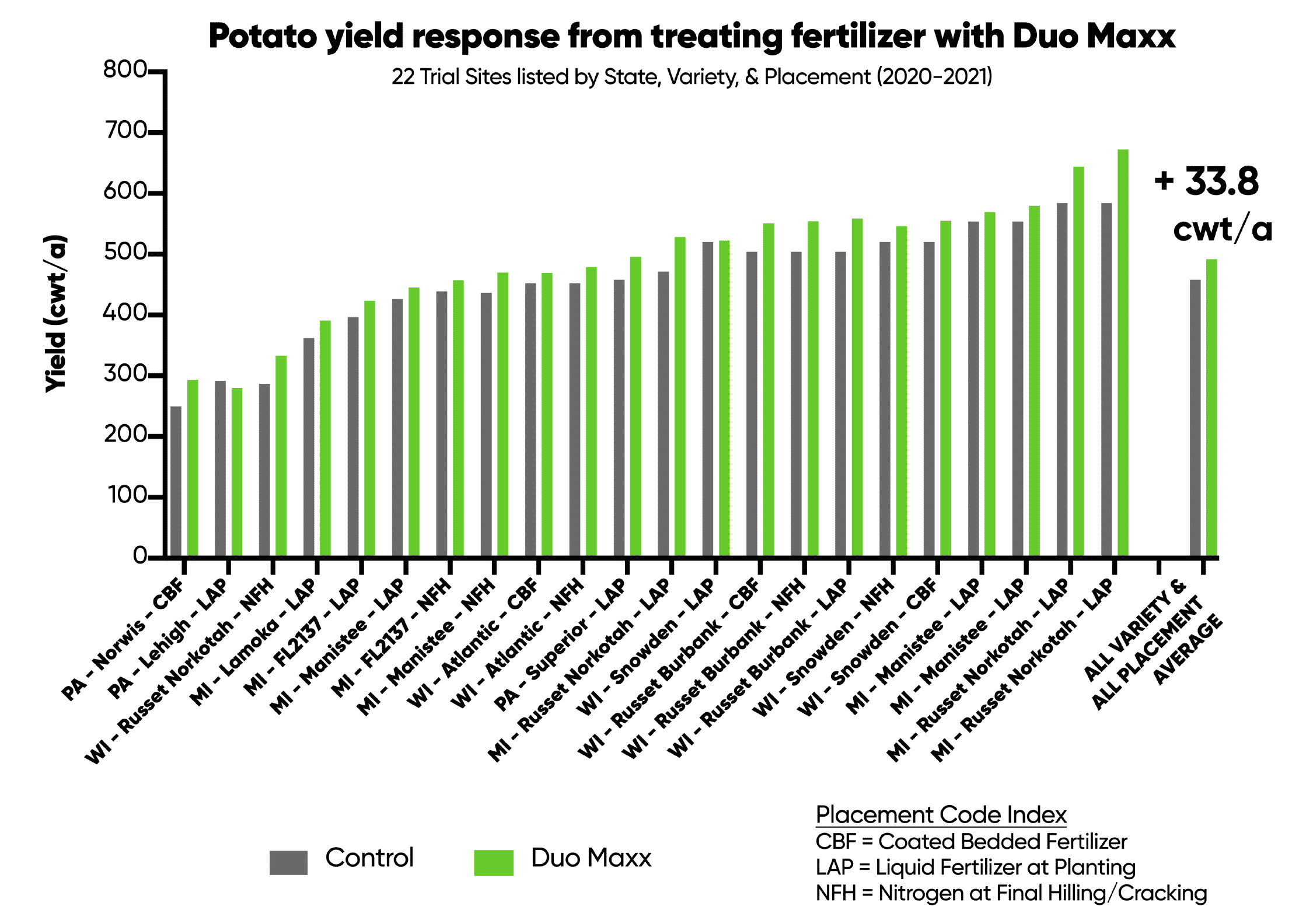
DUO MAXX is intended for treatment of incorporated liquid and granular fertilizer blends with N but can also be used on surface applied P and K.
FERTILEADER® Gold
FERTILEADER Gold improves fry/chip quality and reduces stress during tuber development. The formulation contains 5.7% boron (B), 0.35% molybdenum (Mo), and our patented Seactiv® Complex, which is designed with glycine betaine to combat abiotic stress and a patented IPA molecule to increase sap flow, nutrient mobilization, and reproduction within the plant.
Nutritional roles of FERTILEADER Gold during tuber development:
- Boron acts in synergy with calcium to improve plant resistance to disease, pest, and environmental stresses.
- Boron generally improves calcium absorption, calcium stabilization in the cell wall, and potential for tuber development
- Boron reduces the oxidation of phenols that are responsible for enzymatic discoloration
- When combined, boron and molybdenum work together to convert nitrate nitrogen into functional forms of available sugars within the plant
- Molybdenum is a critical component of the nitrate reductase enzyme
Functional roles of the Seactiv Complex during tuber development:
- Strengthening plant metabolic processes helps increase the transportation of sugars and starches formed within leaves to storage tissues in tubers
- Reducing abiotic stress during tuber development improves plant-water conservation, sap flow, and nutrient movement to tubers. By anticipating stress events with preventative technologies, tubers show greater uniformity and fewer defects.
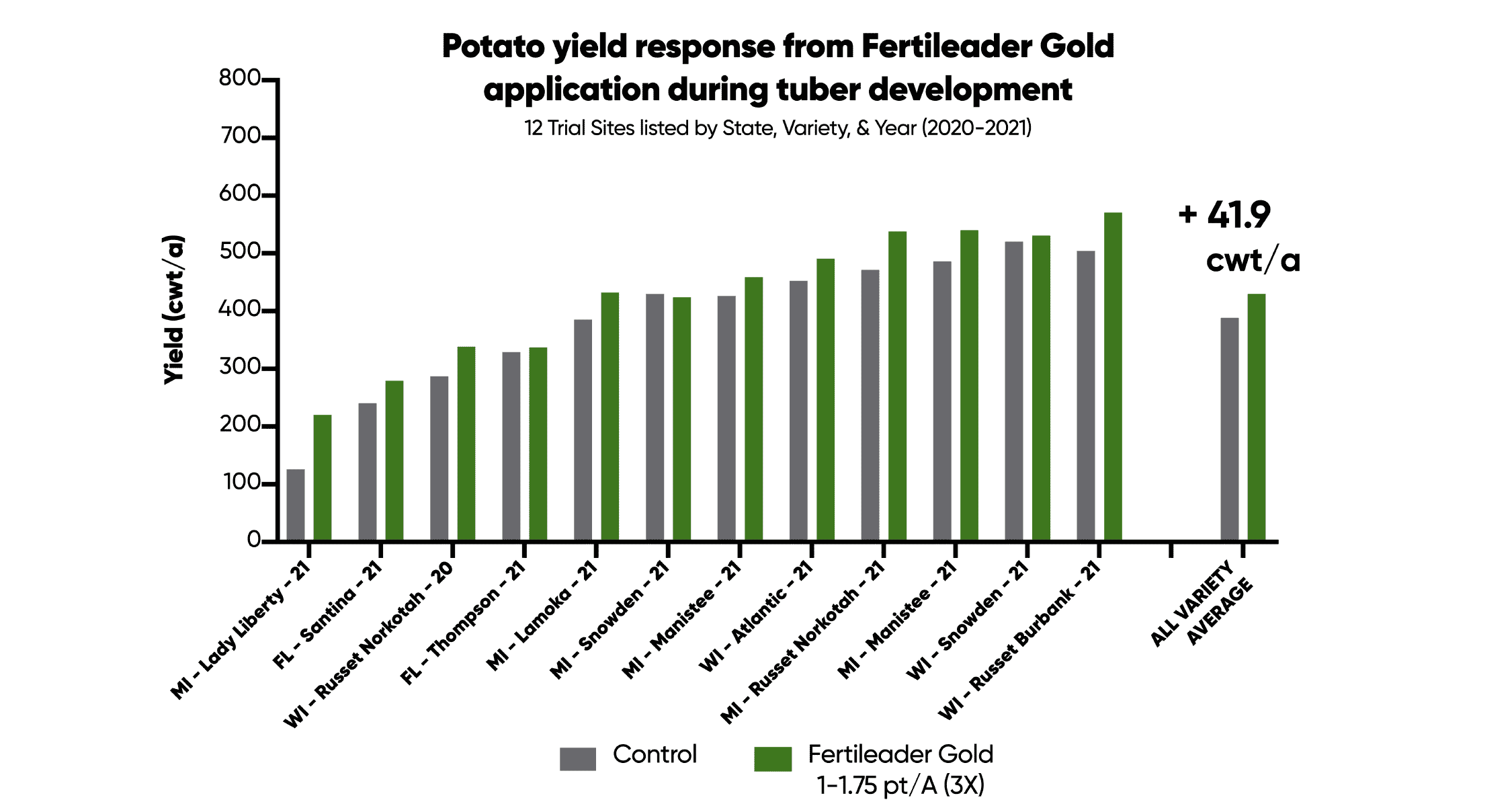
Contact us to receive a crop evaluation and customized nutritional program built for your needs.
